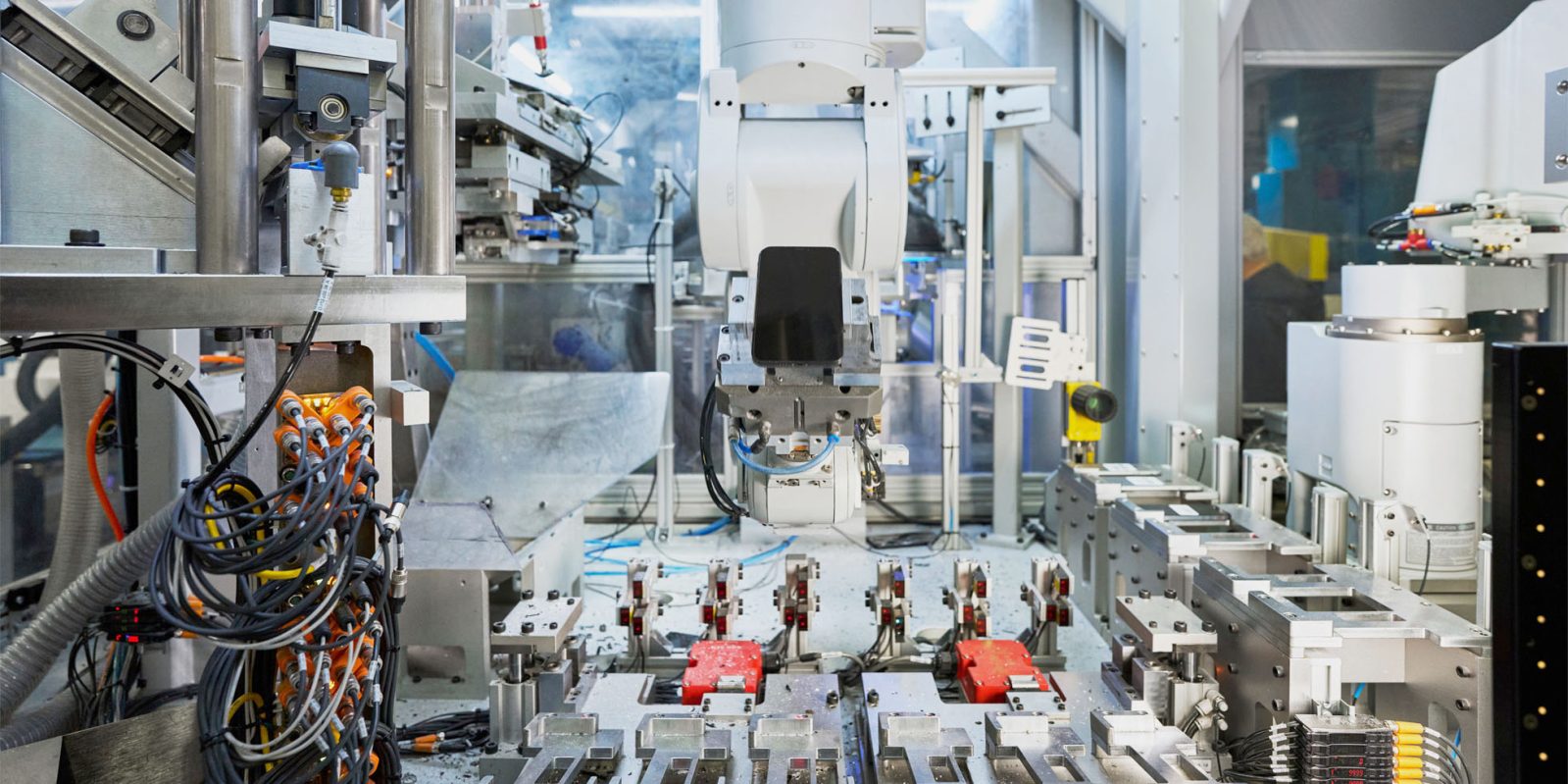
The latest version of Apple’s iPhone recycling robot no longer unscrews devices in order to access the innards; instead, it rips them apart.
The change is one of many that have seen the practicality of Apple’s recycling robots grow from something which took 12 minutes per phone – which the company admits was really just a research project – to 18 seconds …
Apple’s early iPhone recycling robots
Apple’s first iPhone recycling robot, Liam 1.0, was first revealed by the company back in 2016.
Liam is an automated robot that can dissemble iPhones down to their very basic components to then recycle them. Apple showcased a short video of Liam taking apart an iPhone. It disassembled everything from the display, down to the logic boards, and camera components. This allows Apple to separate the gold, copper, silver, and platinum materials out so they can be used in future products and endeavors.
While the company made a fairly big deal of it back then, it would be fair to say that the first version was more of a proof of concept than a tool that would make any real environmental impact. It was simply too slow to be scaleable.
Liam 2.0 was a dramatic improvement, reducing the disassembly time from 12 minutes to 11 seconds.
Daisy is smaller, better, and more flexible
Apple’s current version, Daisy, is actually somewhat slower, at 18 seconds. But as TechCrunch discovered during a visit to the facility, this is outweighed by a much smaller footprint and the ability to separate out almost twice as many materials.
Daisy significantly reduces Liam’s overall footprint from 29 robots across 100 feet to four primary modules, while increasing the number of material output streams from 8 to 15.
Apple has also steadily increased the number of iPhone models the robot can accept. Liam 1.0 only worked with a single model, while Liam 2.0 increased this to six models. But Daisy has grown in flexibility from 18 models initially to 29 today.
From gently unscrewing to ripping apart
Apple realised that since it was only seeking to re-use the raw materials, not the components, there was no need to be gentle.
The stark difference in cycle times between Liam 1.0 and Daisy is due, in part, to a fundamental rethink of the separation process. Whereas the first robot gingerly unscrewed the various components, newer versions take a kind of brute force approach. The robots “punch out” the component now. Turns out it’s significantly faster to effectively rip a phone apart, and while the result is a lot less pretty, no one cares what discarded phones look like. It’s not being refurbished, after all; it’s being melted down.
But still a long way to go
The piece notes that even Daisy’s current capabilities pale alongside the scale of the electronic waste problem.
At its current pace, Daisy can strip up to 1.2 million iPhones a year. It’s a massive improvement over earlier models, but it’s ultimately a drop in the bucket, compared to the 150 million smartphones that were discarded in 2023 (roughly 416,000 per day). That in turn is a mere fraction of the 68 million tons of gadgets that were thrown out globally.
But Apple sees Daisy as an ambassador as much as a worker. Environmental initiatives don’t normally catch the public’s attention, while robots do. If the company can use the media attention to promote other ways of reducing electronic waste – like encouraging people to find new homes for old iPhones, instead of leaving them in drawers – then that will perhaps do more good than Daisy herself.
The full piece, looking at exactly how Daisy works, is an interesting read.
Photo: Apple
FTC: We use income earning auto affiliate links. More.





Comments